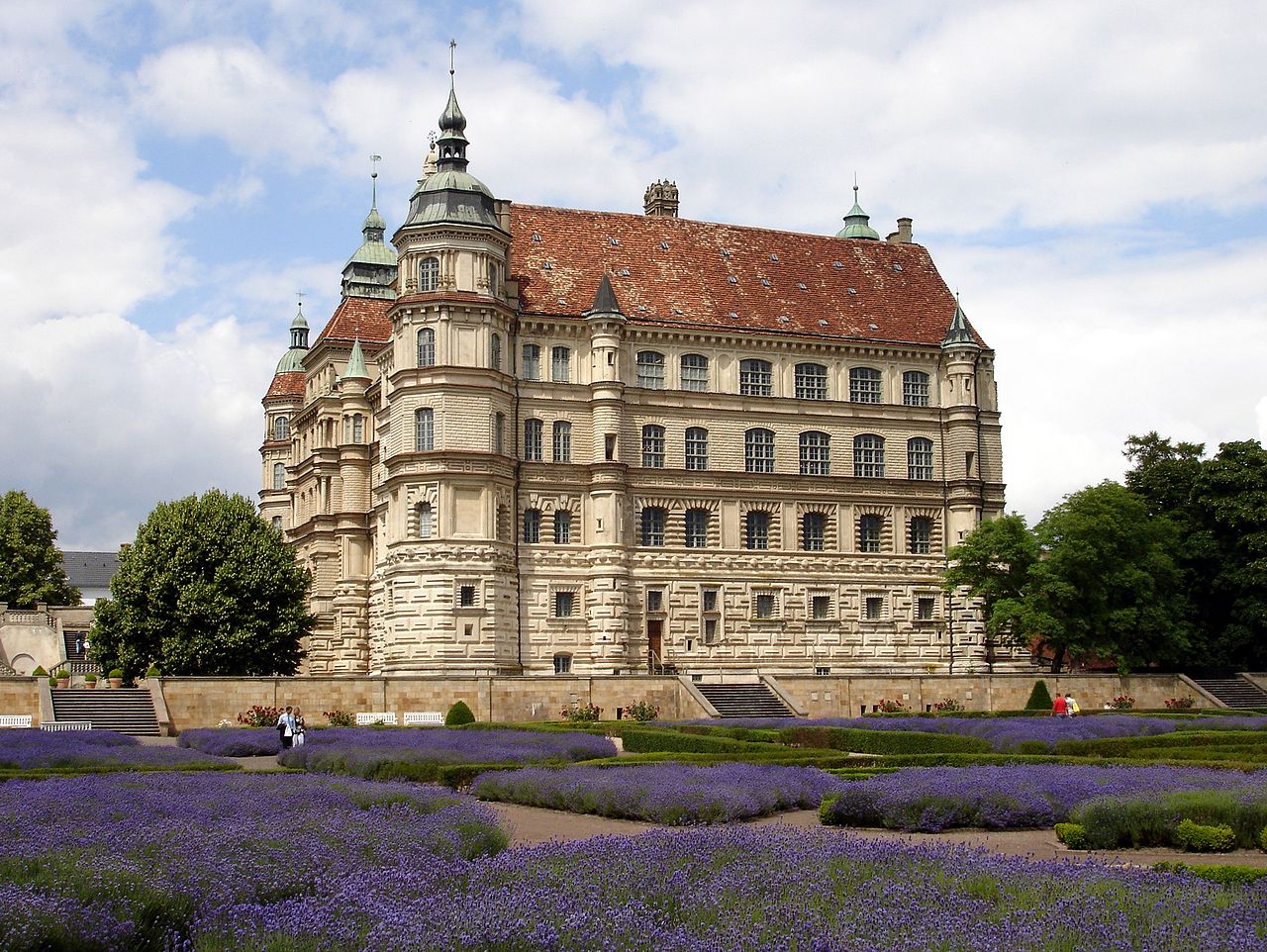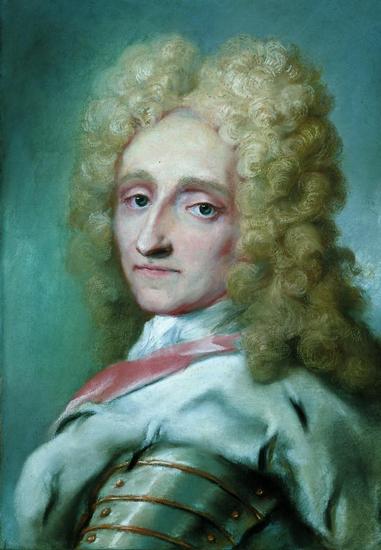by Susan Flantzer
© Unofficial Royalty 2020

Louise of Mecklenburg-Güstrow, Queen of Denmark and Norway; Credit – Wikipedia
Louise of Mecklenburg-Güstrow was the first wife of Frederik IV, King of Denmark and Norway, who made two bigamous marriages during Louise’s lifetime. She was born on August 28, 1667, in Güstrow, then in the Duchy of Mecklenburg-Güstrow, now in the German state of Mecklenburg-Vorpommern. Louise was the ninth of the eleven children and the sixth of the eight daughters of Gustav Adolf, Duke of Mecklenburg-Güstrow and Magdalene Sibylle of Holstein-Gottorp. Louise’s father was the last Duke of Mecklenburg-Güstrow. Gustav Adolf survived his two sons and upon his death, there was an inheritance dispute that eventually led to the creation of the Duchy of Mecklenburg-Strelitz.
Louise had eight older siblings and two younger siblings:
- Johann, Hereditary Prince of Mecklenburg-Güstrow (1655 – 1660), died in childhood
- Eleonore (1657 – 1672), died at age 15
- Marie (1659 – 1701), married Adolphus Friedrich II, Duke of Mecklenburg-Strelitz, had five children
- Magdalene (1660 – 1702)
- Sophie (1662 – 1738), married (fourth wife) Duke Christian Ulrich I of Württemberg-Oels (link in German), no children
- Christine (1663 – 1749), married Ludwig Christian, Count of Stolberg-Gedern, had 23 children in 19 pregnancies (including four sets of twins), only 11 survived childhood, great-great-great-grandparents of Queen Victoria of the United Kingdom
- Karl, Hereditary Prince of Mecklenburg-Güstrow (1664 – 1688), married Marie Amalie of Brandenburg-Schwedt, had one child who was born and died on the day of Karl’s death, died from smallpox at age 23
- Hedwig (1666 – 1735), married August, Duke of Saxe-Merseburg-Zörbig, had five children
- Elisabeth (1668 – 1738), married Heinrich, Duke of Saxe-Merseburg-Spremberg, had three children
- Auguste (link in German) (1674 – 1756), unmarried

Güstrow Castle, Louise’s childhood home; Credit – Wikipedia
Louise grew up at her father’s modest court at Güstrow Castle. Her parents were adherents to Pietism, a movement that originated in the Lutheran Church in the 17th century in Germany that stressed personal piety over religious formality and orthodoxy. Louise met her future husband Crown Prince Frederik of Denmark and Norway, son of Christian V, King of Denmark and Norway and Charlotte Amalie of Hesse-Kassel when he was looking for a wife at German Protestant courts. Frederik was instructed by his father to ask his aunt Anna Sophia of Denmark and Norway, Electress of Saxony for advice. Anna Sophia advised Frederik to marry Louise. Frederik was already partial to Louise and readily agreed. Like Frederik, Louise was a great-great-grandchild of King Frederik II of Denmark and Norway. On December 5, 1695, their wedding took place at Copenhagen Castle in Copenhagen, Denmark.

Frederik IV, King of Denmark and Norway; Credit – Wikipedia
Louise and Frederik had four sons and one daughter. Sadly, three sons died in infancy.
- Christian of Denmark and Norway (1697 – 1698), died in infancy
- Christian VI, King of Denmark and Norway (1699 – 1746), married Sophie Magdalene of Brandenburg-Kulmbach, had one son and one daughter including Frederik V of Denmark and Norway
- Frederik Carl of Denmark and Norway (1701 – 1702), died in infancy
- Jørgen of Denmark and Norway (1703 – 1704), died in infancy
- Charlotte Amalie of Denmark and Norway (1706 – 1782), unmarried
Frederik’s father King Christian V died on August 25, 1699, due to the after-effects of a hunting accident, ten months after he had suffered very severe injuries from being kicked by a deer. Frederik acceded to the Danish throne as King Frederik IV. Frederik and Louise were anointed King and Queen of Denmark and Norway on April 15, 1700, at the Frederiksborg Castle Chapel.

Queen Louise; Credit – Wikipedia
Growing up with parents who strictly adhered to Pietism, it was no surprise that Louise was very religious throughout her life. Her main interest was reading religious books and her 400-book collection, consisting largely of German ascetic writings, went to the Royal Library after her death. As dower properties, Louise owned Hirschholm Palace and the estates Rungstedgård and Ebberødgård, all near Copenhagen. In 1704, Louise built a gunpowder mill that was in operation until 1910.
Louise found it difficult to endure her husband’s infidelities and even worse, his two bigamous marriages. At times, Louise reproached her husband which often led to embarrassing situations at the court. It is suspected that Louise’s deep religiousness was also an escape from her disappointing marriage. Louise took part in the official court life and fulfilled her ceremonial duties. Otherwise, she led a withdrawn and quiet life.
In 1699, King Frederik IV began a relationship with Elisabeth Helene von Vieregg, a lady-in-waiting to his unmarried sister Sophia Hedwig. In 1703, without divorcing his wife Louise, Frederik made a bigamous marriage to Elisabeth. After Elisabeth died in 1704 due to childbirth complications giving birth to a son who lived only nine months, Frederik gave her an elaborate funeral.
After the death of Elisabeth, Frederik began an affair with her lady-in-waiting, Charlotte Helene von Schindel. In 1709, Frederik wanted to again make a bigamous marriage but received strong opposition from the church leaders who told him that the law against bigamy also applied to kings. Charlotte and Frederik had a daughter in 1710 who died in infancy.
After losing interest in Charlotte Helene von Schindel in 1711, Frederik then fell in love with 19-year-old Anna Sophie Reventlow, daughter of Grand-Chancellor Conrad Reventlow who held a position similar to Prime Minister. In 1712, Frederik abducted her from her parents’ home and took her to Skanderborg Castle where they were married bigamously while Louise was still alive.
Queen Louise died on March 15, 1721, aged 53, at Charlottenborg Palace in Copenhagen, Denmark. She was buried at Roskilde Cathedral in Roskilde, Denmark.

Tomb of Louise of Mecklenburg-Güstrow; Photo by Susan Flantzer
After the death of Louise, King Frederik IV and Anna Sophie Reventlow were married in a second formal wedding conducted with great ceremony. Although the marriage was still scandalous, it was not declared morganatic and Anna Sophie was crowned Queen of Denmark and Norway less than a month after Louise’s death. Anna Sophie and King Frederick IV had six children. Three were born before the legal marriage in 1721 but none survived. This was seen by many as divine punishment for their bigamy. The three children born after the 1721 marriage were styled as Prince/Princess of Denmark but none of them survived infancy either. Anna Sophie was hated by Frederik’s two surviving children from his first marriage.
Upon Frederik IV’s death, his son and successor King Christian VI banished Anna Sophie from the court and kept her under house arrest at Clausholm Castle, her family home. When Anna Sophie died in 1743, King Christian VI allowed her to be buried at Roskilde Cathedral but in the Trolle Chapel, on the opposite side of the cathedral, far away from his parents’ tombs – so Louise got some revenge in death.
Kingdom of Denmark Resources at Unofficial Royalty
- Kingdom of Denmark Index
- Danish Orders and Honours
- Danish Royal Burial Sites: House of Oldenburg, 1448 – 1863
- Danish Royal Burial Sites: House of Schleswig-Holstein-Sonderburg-Glücksburg, 1863 – present
- Danish Royal Christenings
- Danish Royal Dates
- Danish Royal Residences
- Danish Royal Weddings
- Line of Succession to the Danish Throne
- Profiles of the Danish Royal Family
Works Cited
- Da.wikipedia.org. 2020. Louise Af Mecklenburg-Güstrow. [online] Available at: <https://da.wikipedia.org/wiki/Louise_af_Mecklenburg-G%C3%BCstrow> [Accessed 29 April 2020].
- De.wikipedia.org. 2020. Louise Zu Mecklenburg. [online] Available at: <https://de.wikipedia.org/wiki/Louise_zu_Mecklenburg> [Accessed 29 April 2020].
- En.wikipedia.org. 2020. Louise Of Mecklenburg-Güstrow. [online] Available at: <https://en.wikipedia.org/wiki/Louise_of_Mecklenburg-G%C3%BCstrow> [Accessed 29 April 2020].
